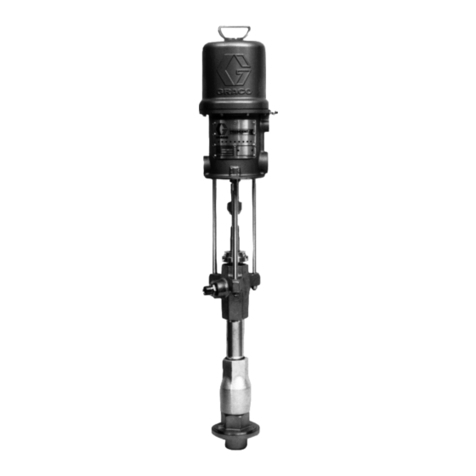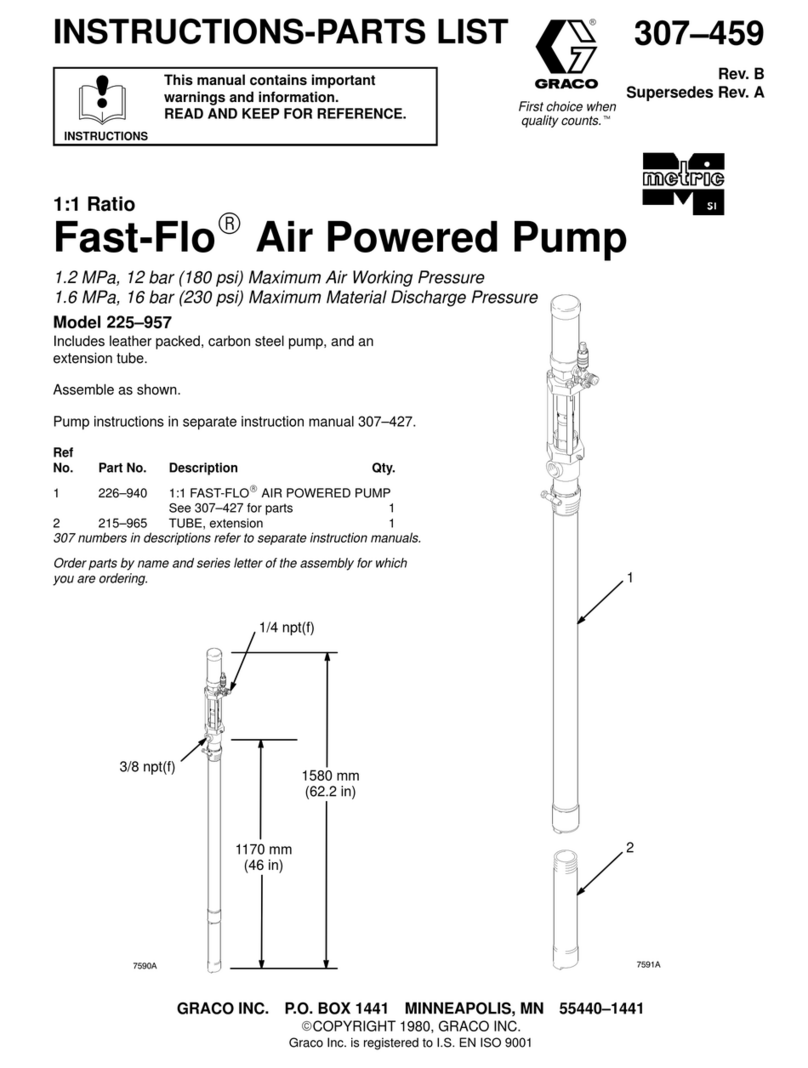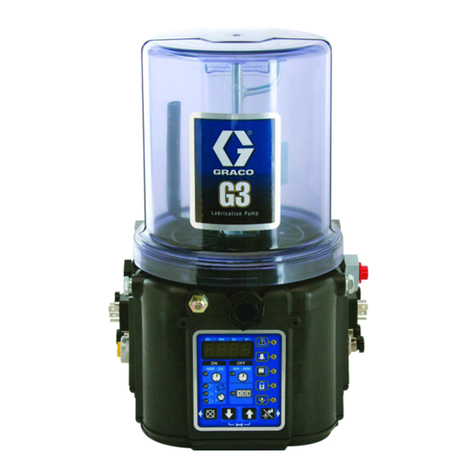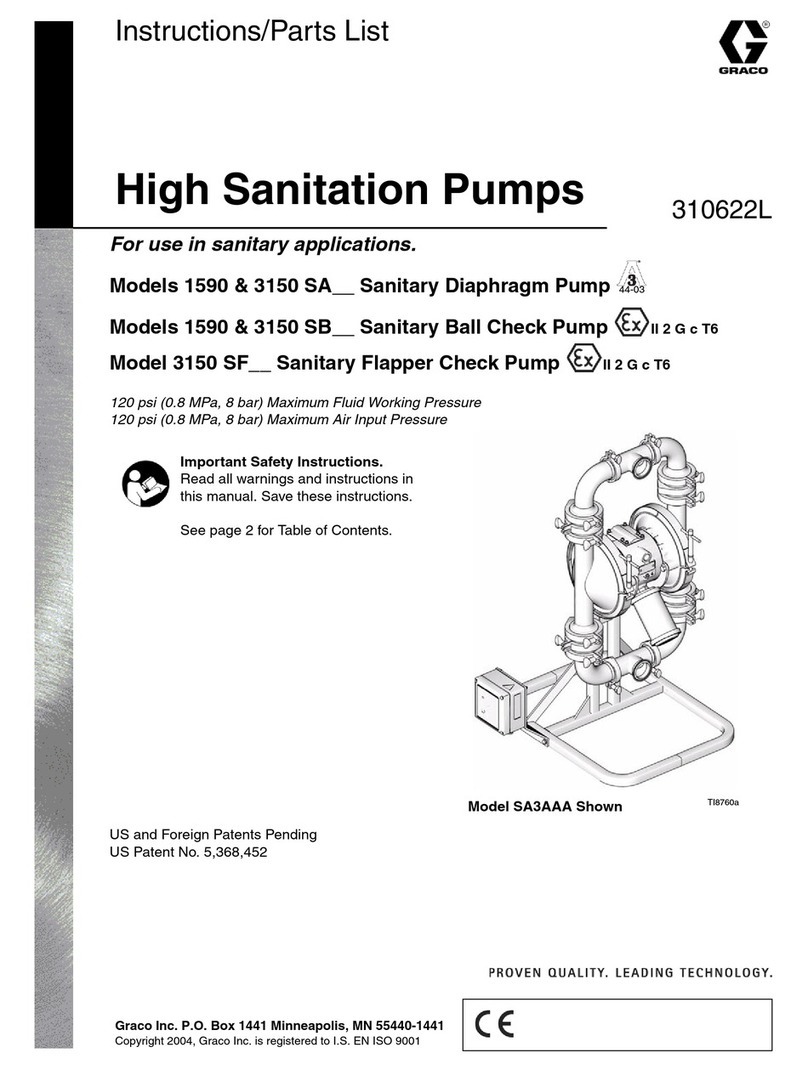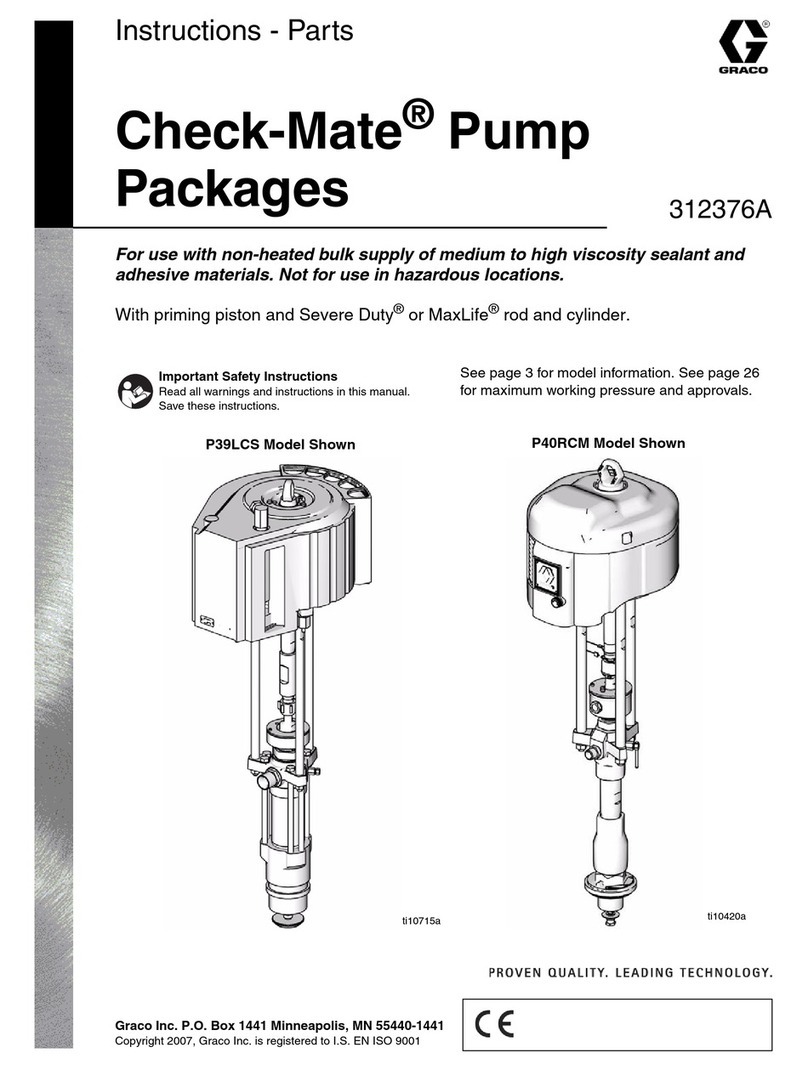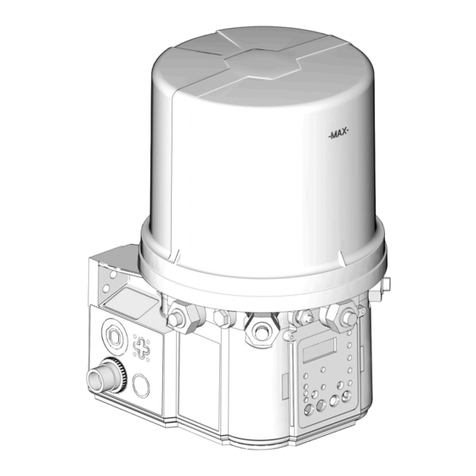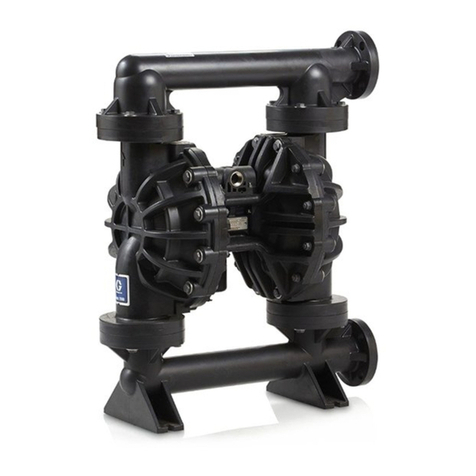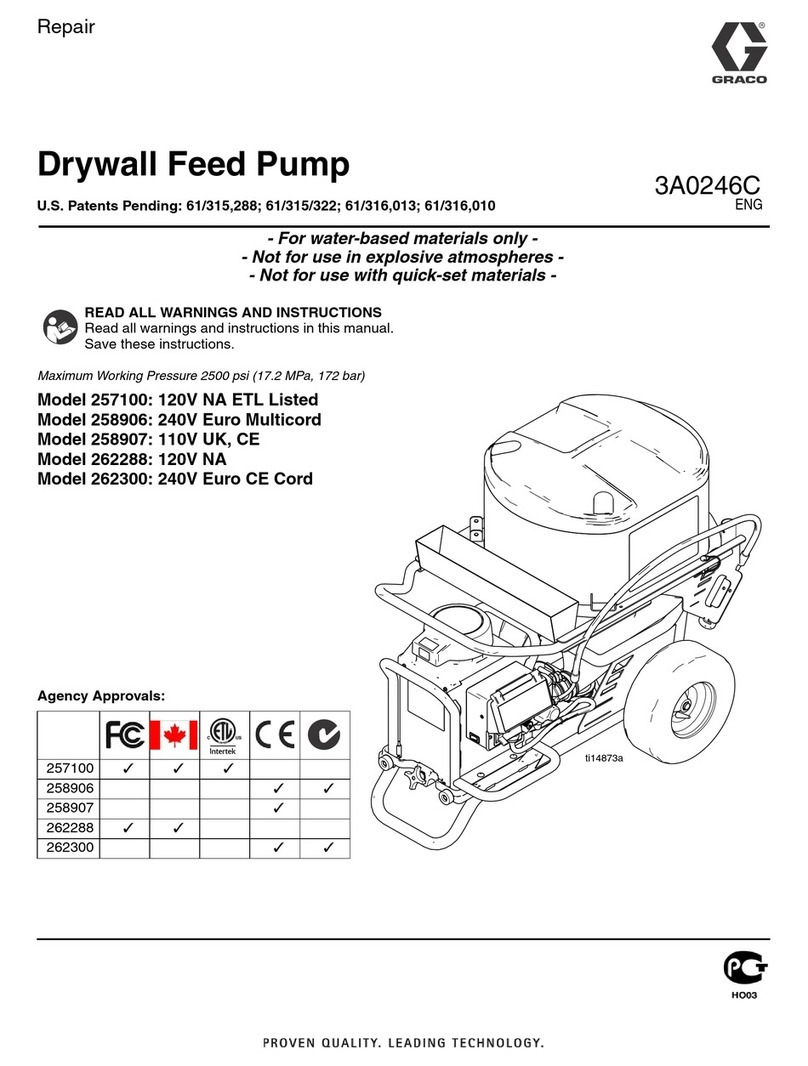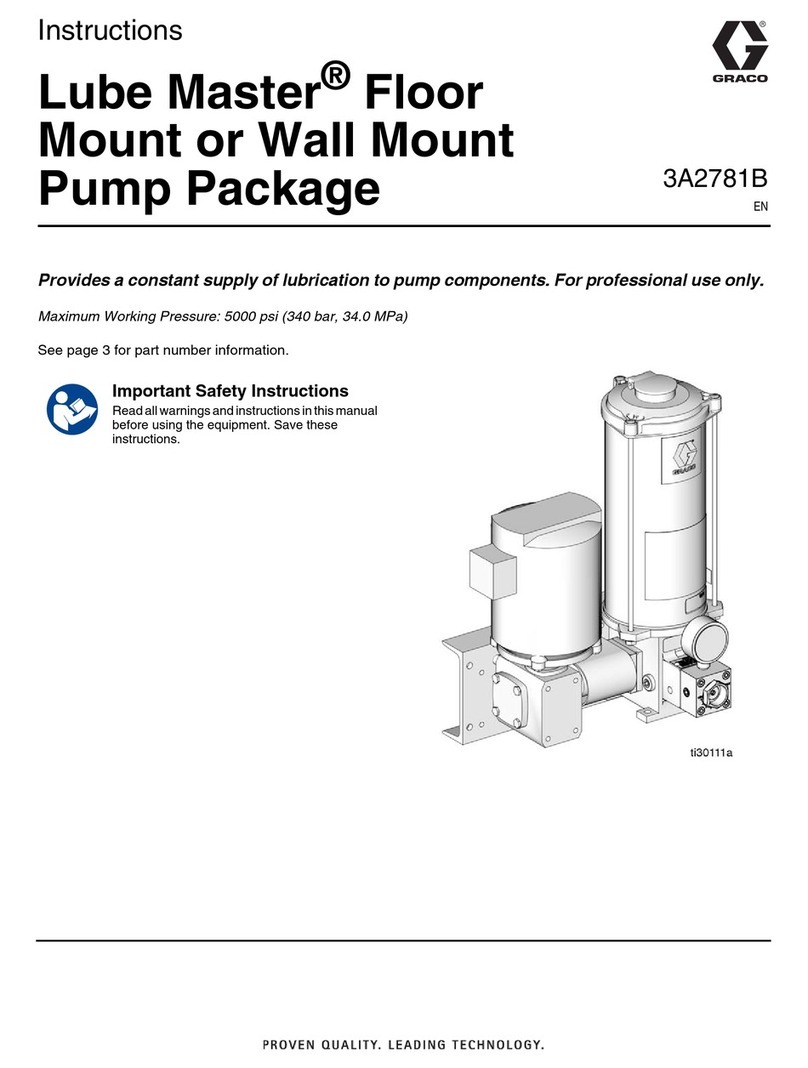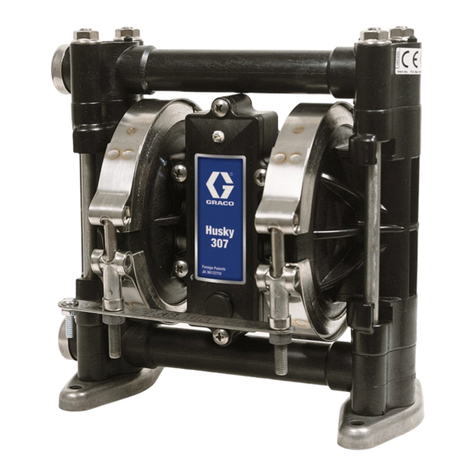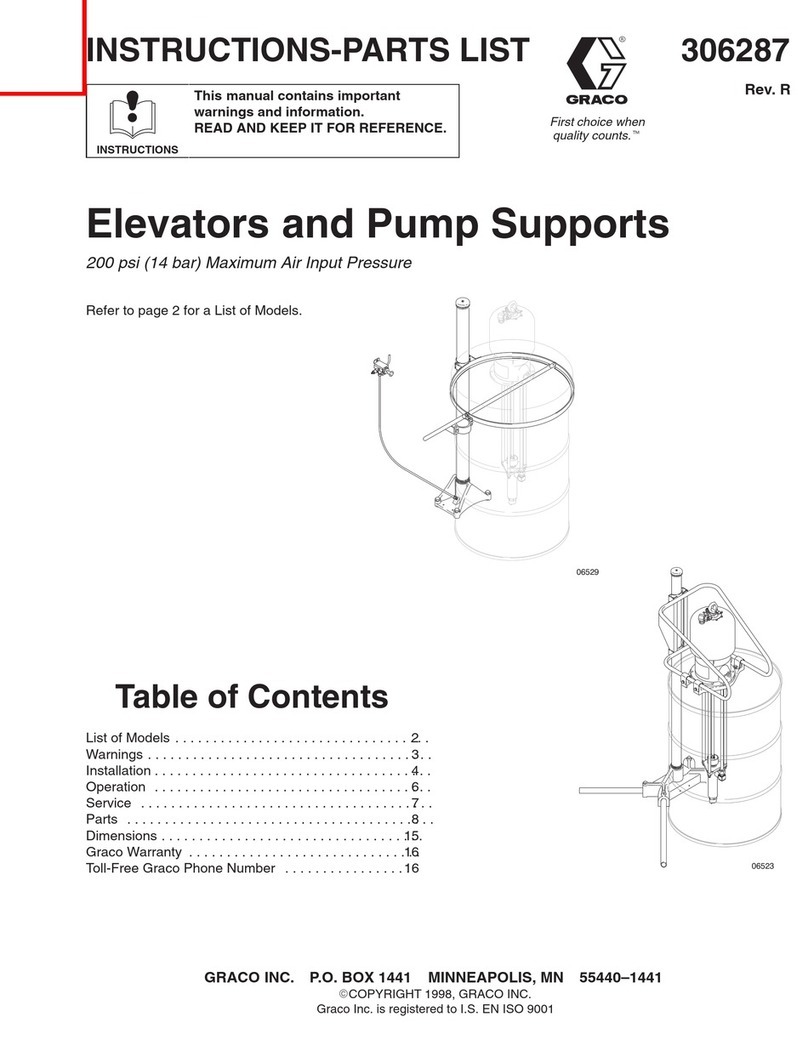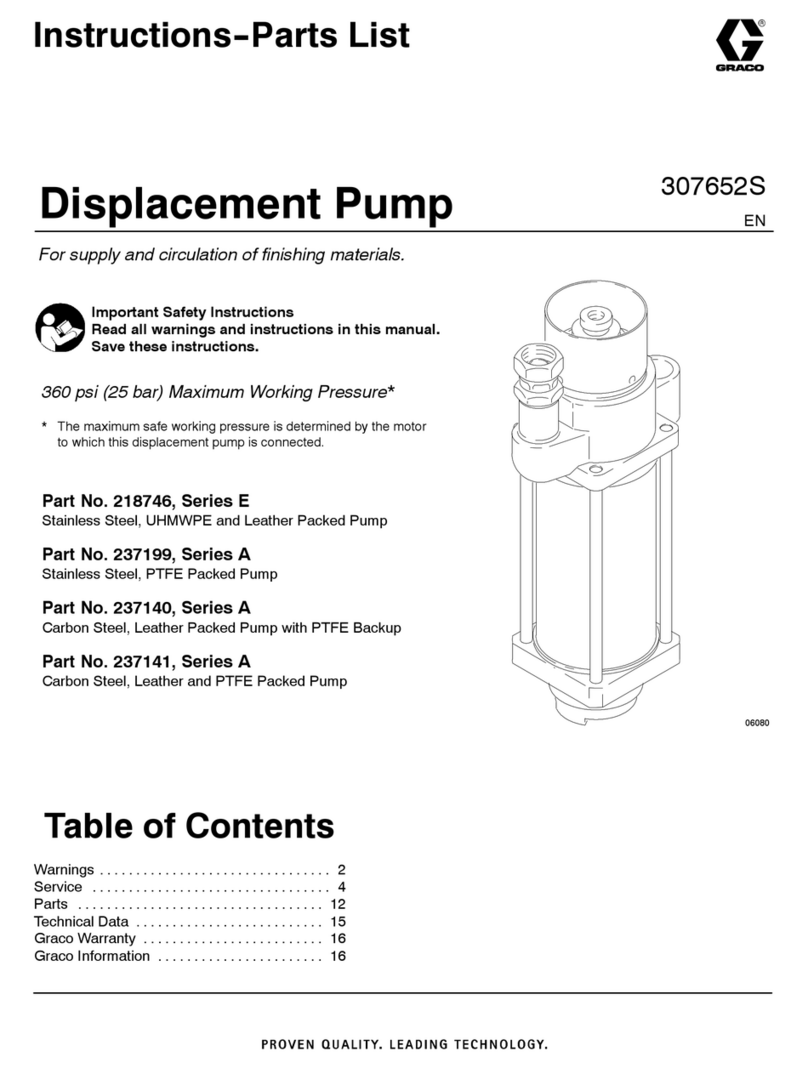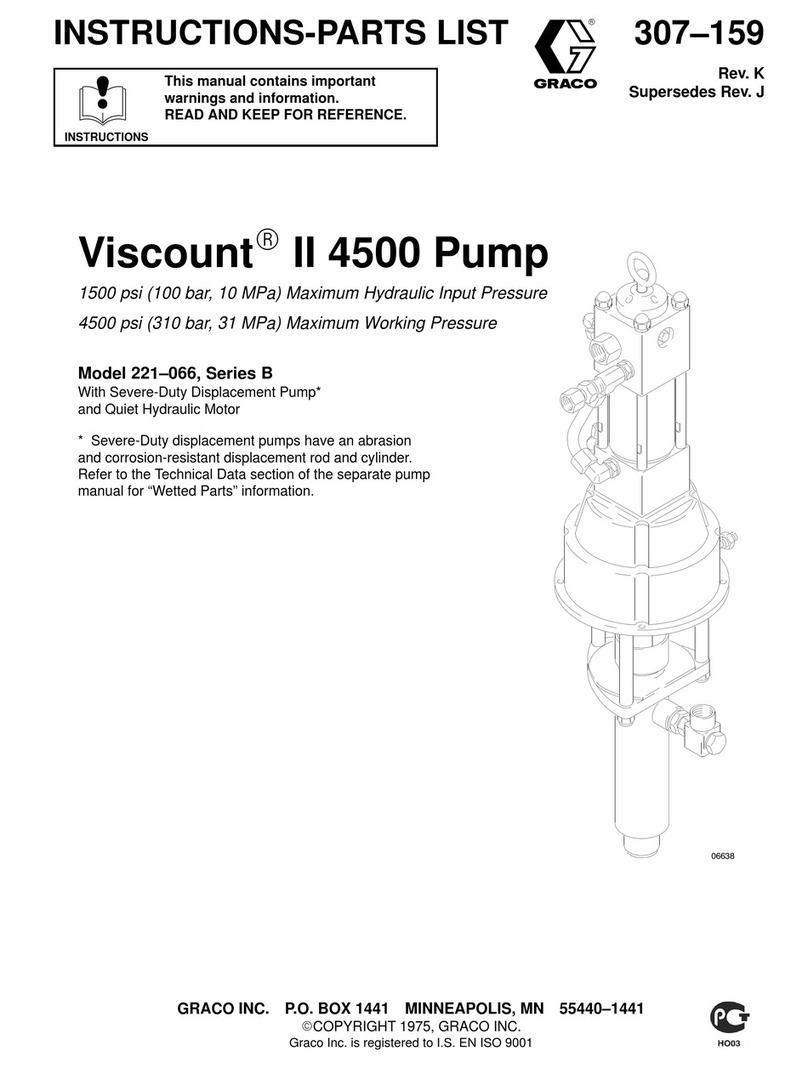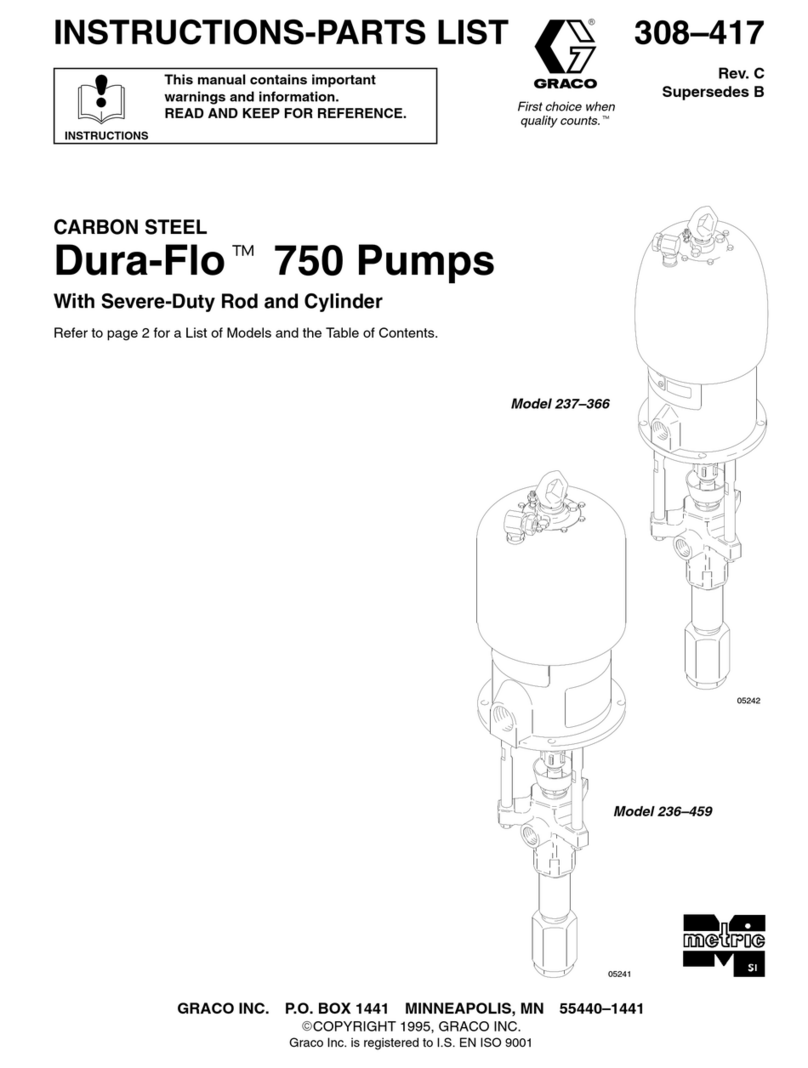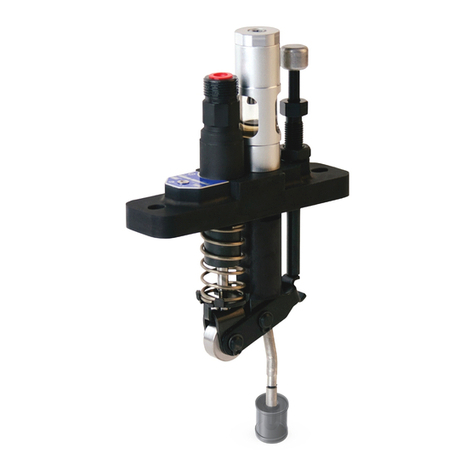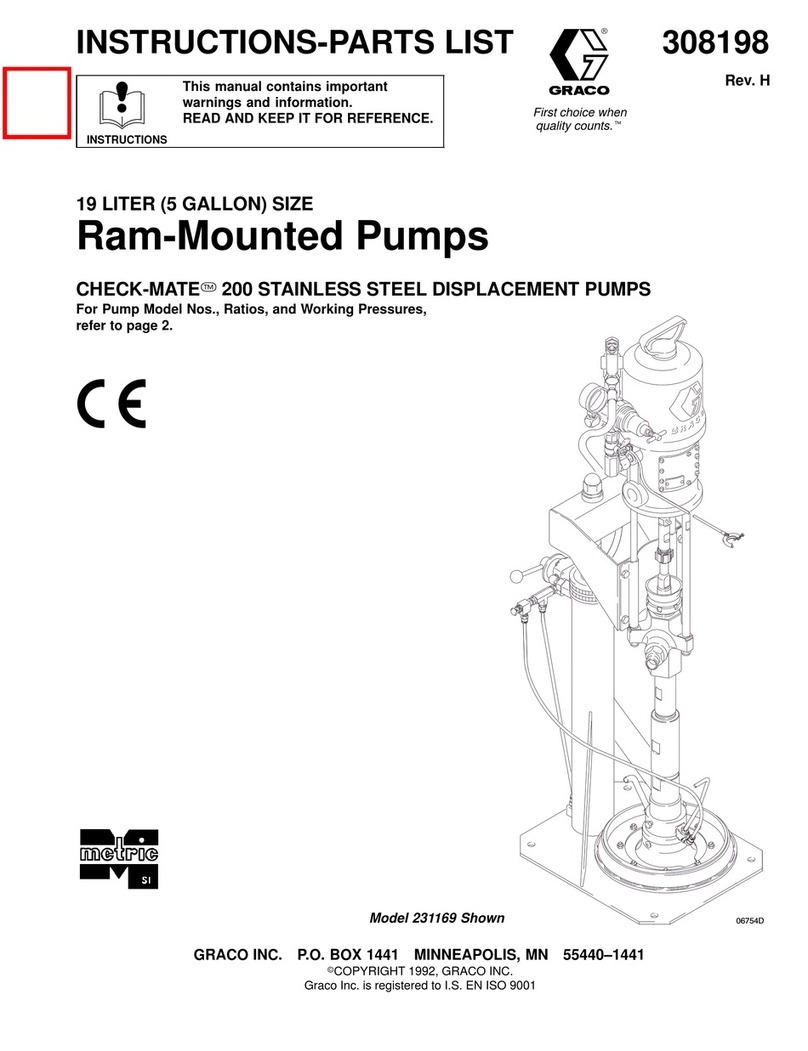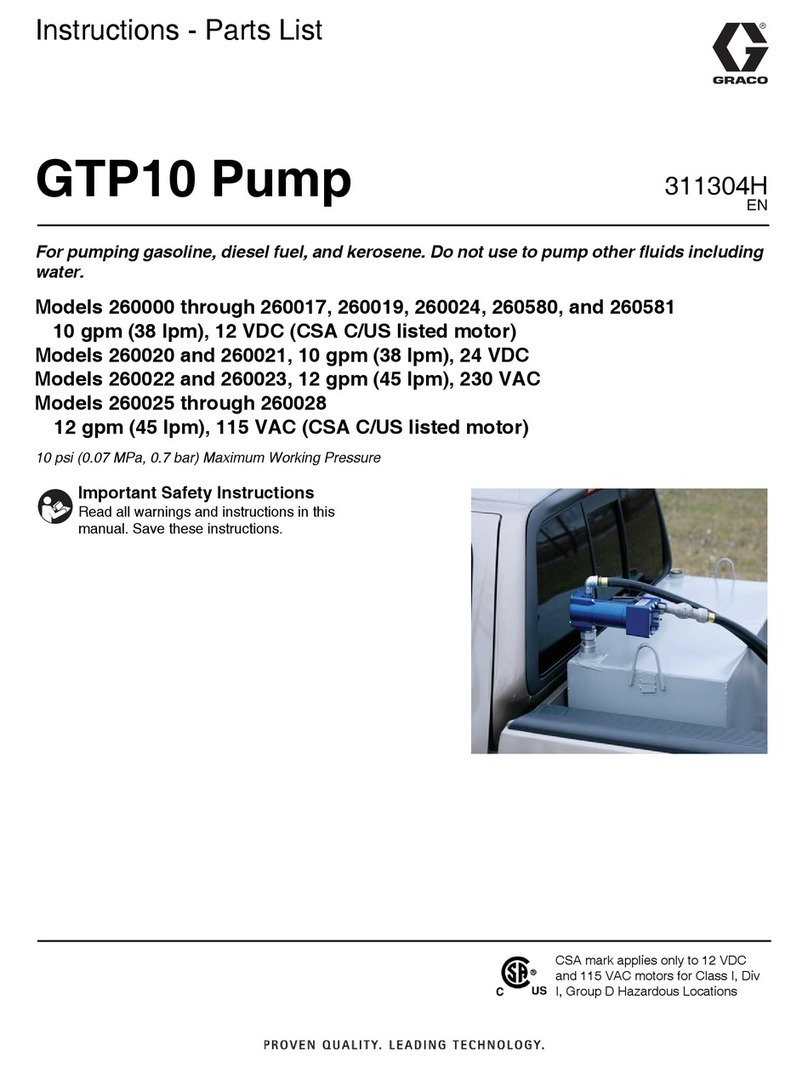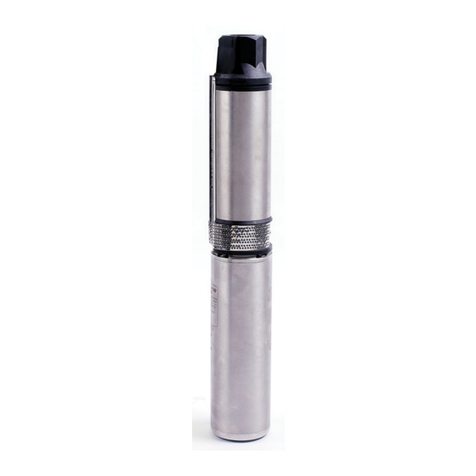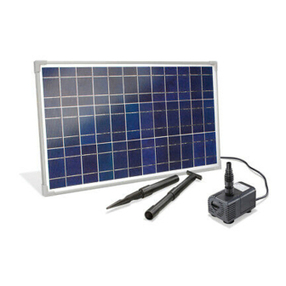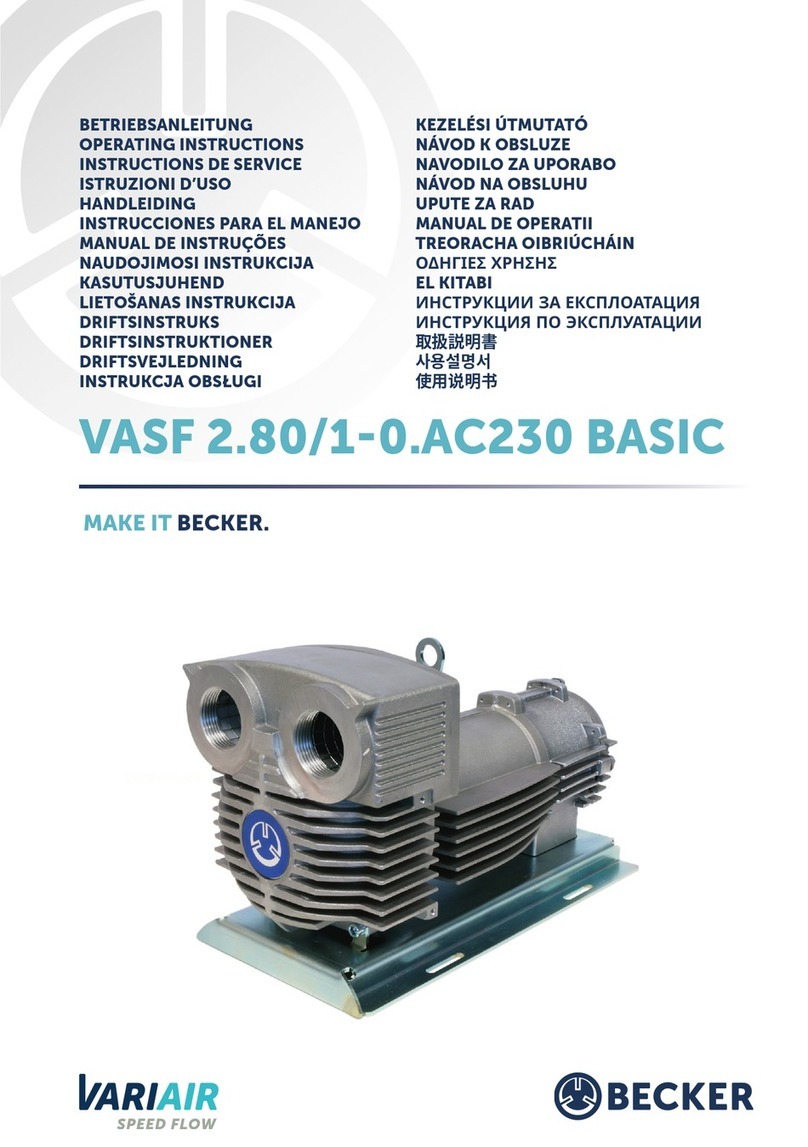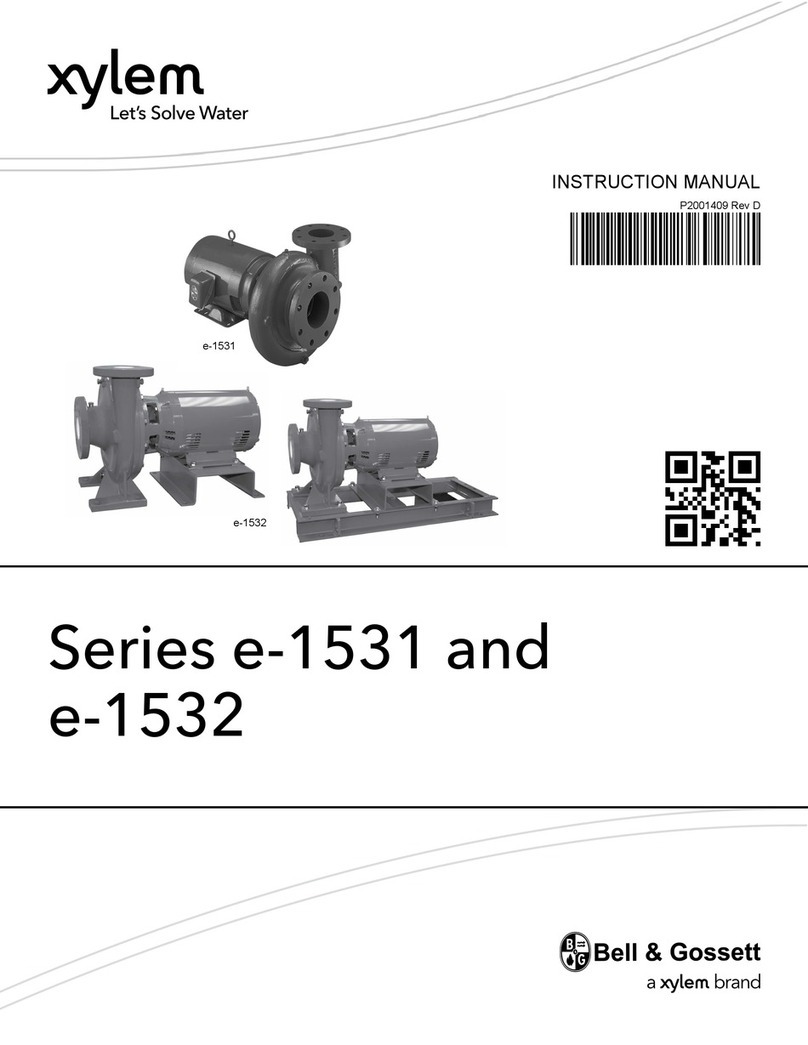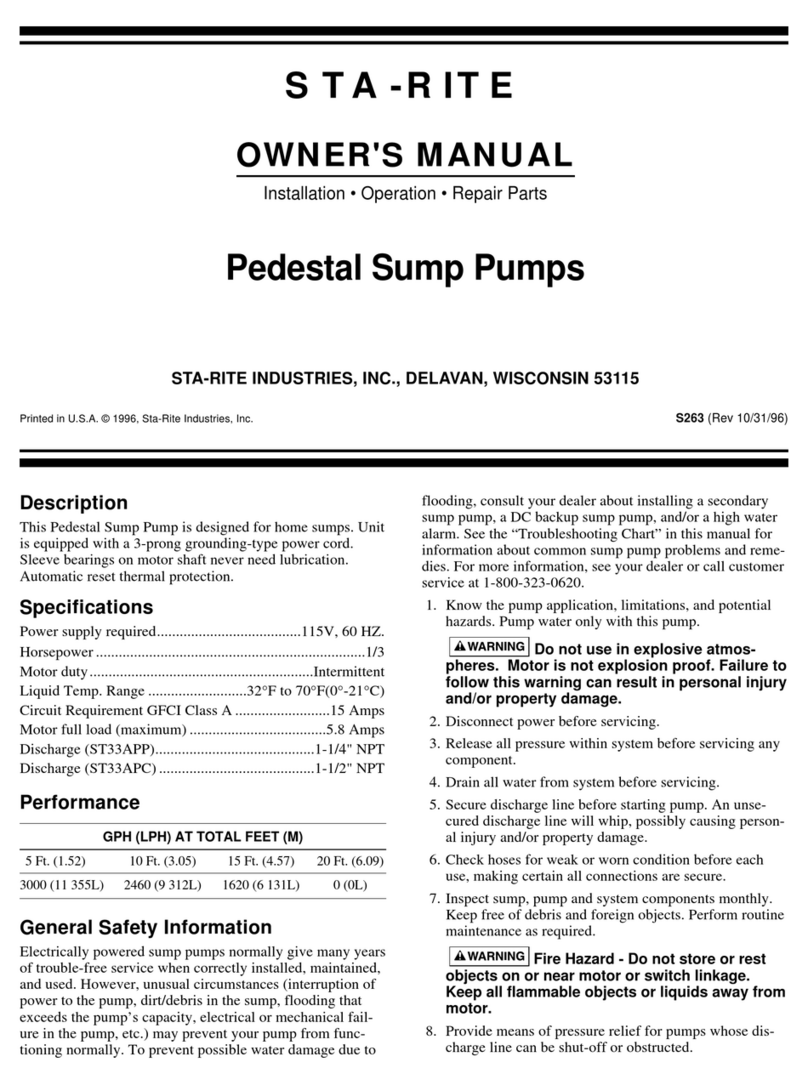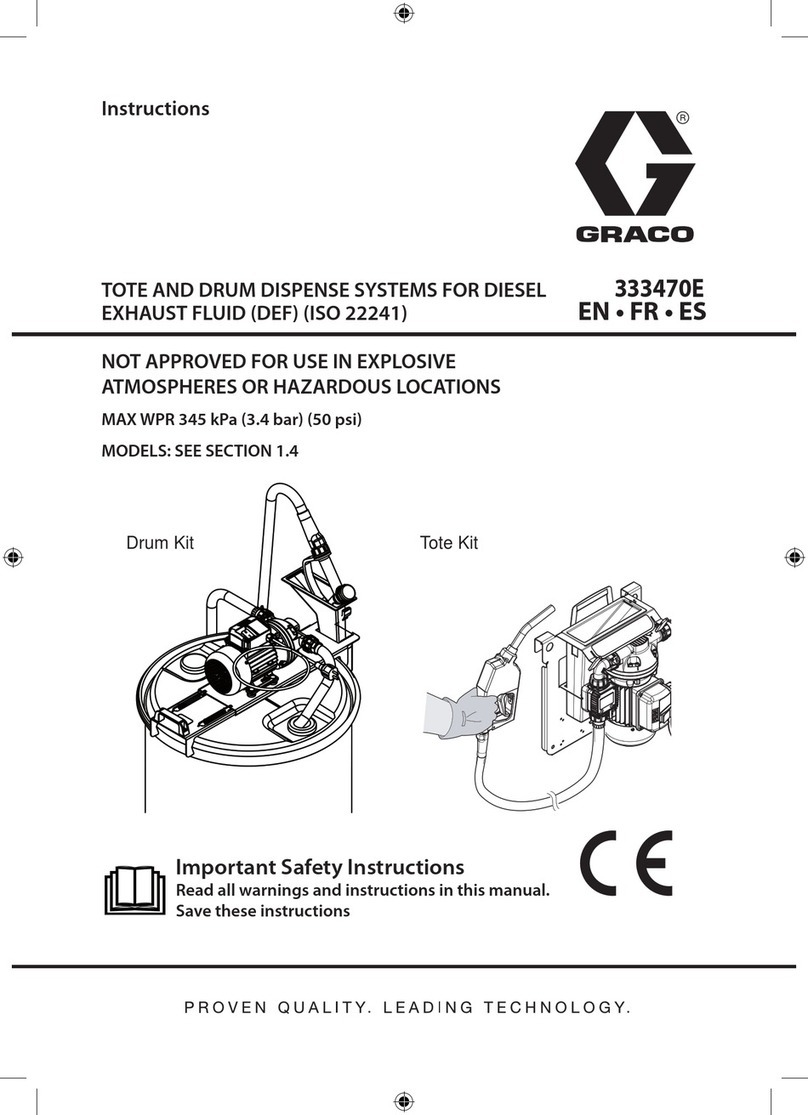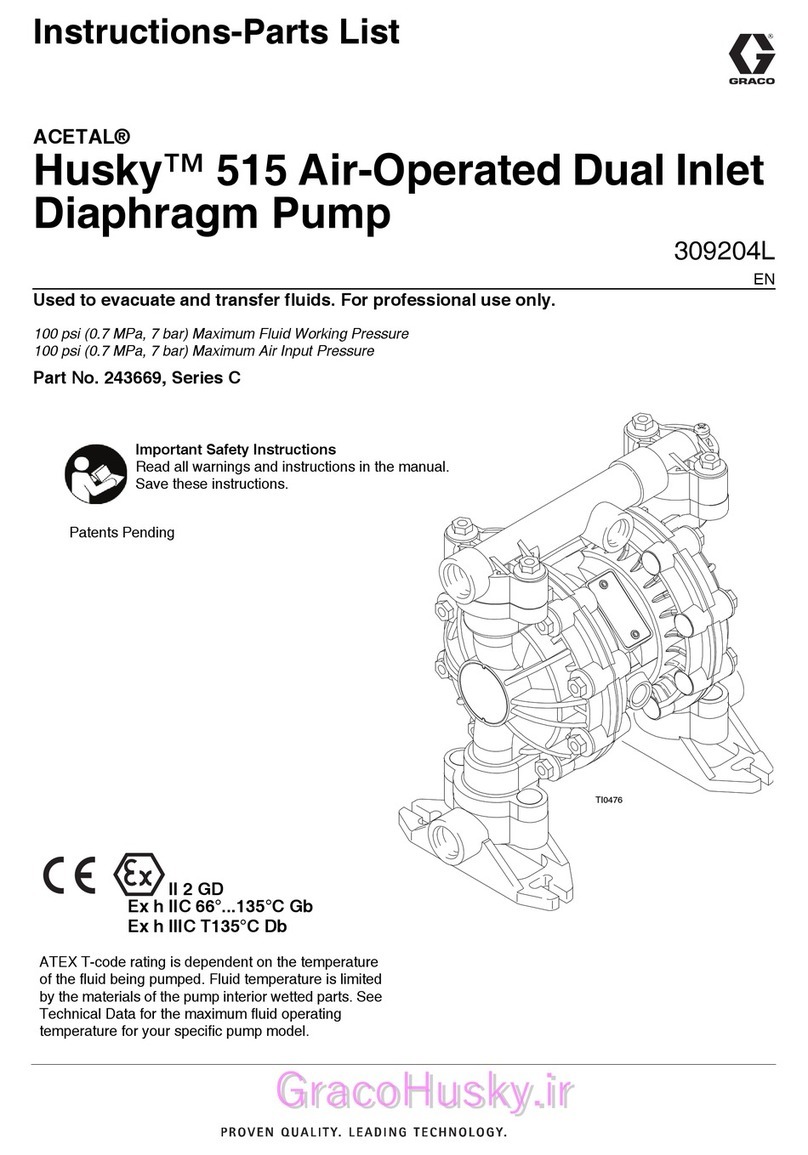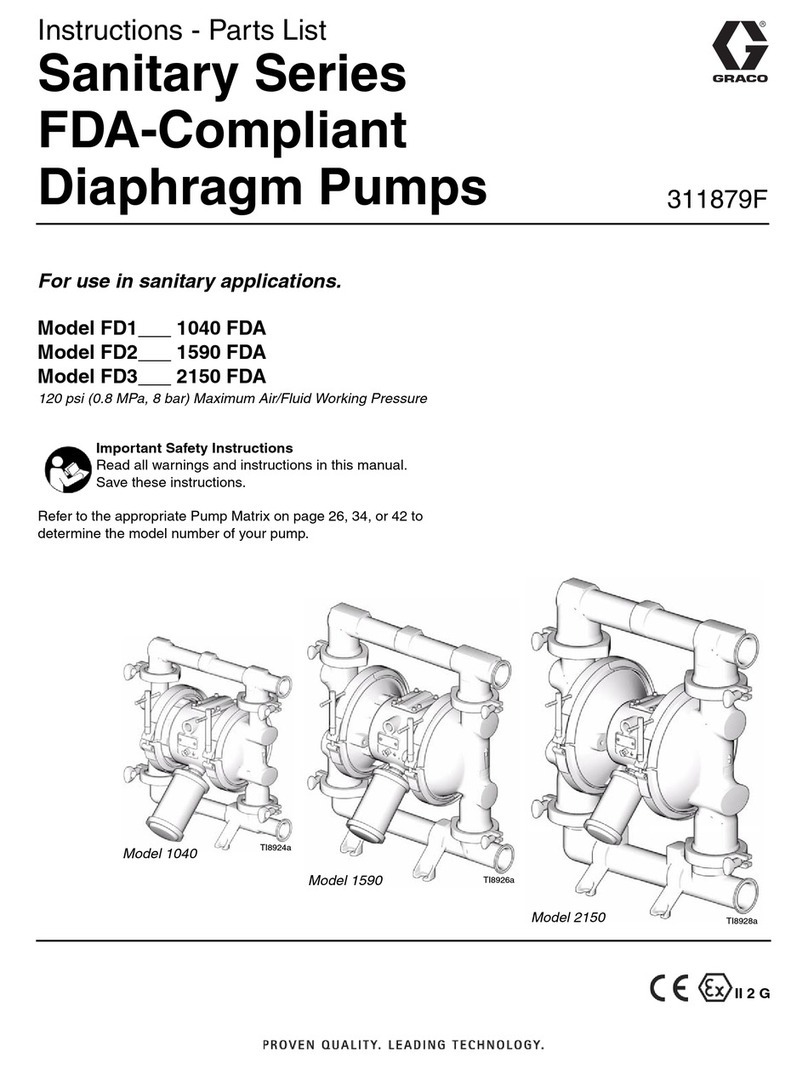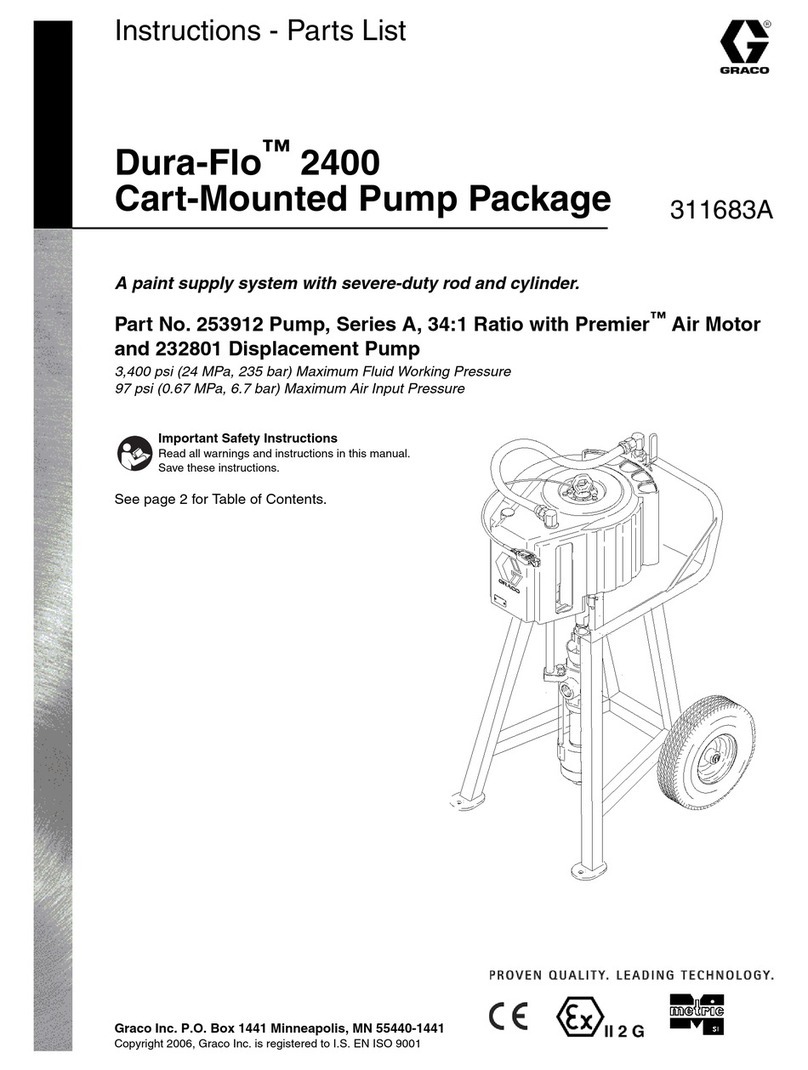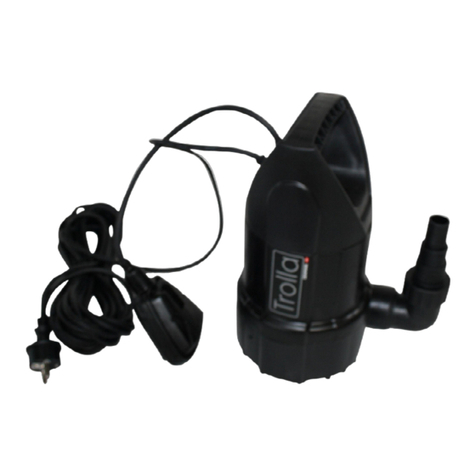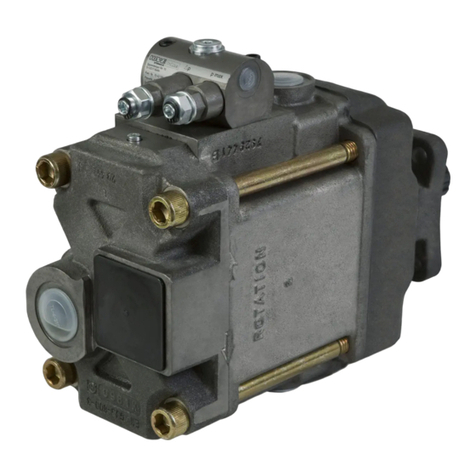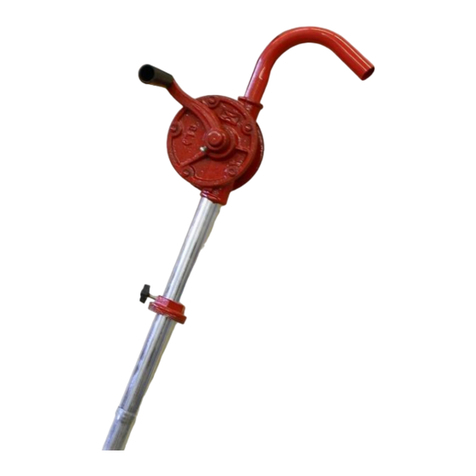
4ą307-878
SAFETY
W
ARNINGS
HIGH PRESSURE SPRAY CAN CAUSE SERIOUS INJURY.
FOR PROFESSIONAL USE ONLY. OBSERVE ALL WARNINGS
Read and understand all instruction manuals before operating equipment.
FLUID INJECTION HAZARD
General
Safety
This
equipment generates fluid pressure
high enough to
cause
an injection injury
.
Spray from the dispense valve
or fluid emitted under high pressure from leaks or rup-
tured
components
can inject fluid through your skin and
into
your body and cause extremely
serious bodily injury
,
including
the need for amputation. Also, fluid injected or
splashed into the eyes or on the skin can cause serious
damage.
NEVER point the dispensing valve at anyone or at any
part
of the body
. NEVER
put hand or fingers over the end
of
the dispensing valve.
ALWAYS
follow the
Pressure Relief Procedure
, at
right,
before
cleaning
or removing the nozzle or servicing any
system equipment.
NEVER try to stop or deflect leaks with your hand or
body.
Be
sure equipment safety devices are operating properly
before
each use.
Medical Alert––Injection W
ounds
If any fluid appears to penetrate your skin, get EMER-
GENCY MEDICAL CARE AT ONCE. DO NOT TREAT
AS
A SIMPLE CUT
.
T
ell the doctor exactly what fluid was
injected.
Note
to Physician:
Injection in the skin is a traumatic in
-
jury.
It is important to treat the injury surgically as soon
as
possible. Do not delay treatment to research toxic
-
ity.
T
oxicity
is a concern with most lubricants injected
directly into the blood stream. Consultation with a
plastic surgeon or reconstructive hand surgeon may
be
advisable.
Pressure Relief Procedure
To
reduce the risk of serious bodily injury
, including
fluid
injection or splashing in the eyes or on the skin, always
follow this procedure whenever you shut off the pump,
when
checking or servicing any part of
the system, when
installing
or
changing dispensing devices, and whenever
you
stop dispensing.
1.
Close the pump air regulator
.
2. Hold a metal part of the valve firmly to a grounded
metal
waste container and trigger the valve to relieve
the
fluid pressure.
Dispensing V
alve Safety (if applicable)
Do
not modify any part of the dispensing valve. Only
use
extensions and no–drip tips which are designed for use
with
your dispensing valve. Modifying parts can cause a
malfunction and result in serious bodily injury, including
fluid
injection and splashing in the eyes or on the skin.
Flexible Nozzle Safety
Be
sure you know the maximum working pressure of the
flexible nozzle you are using. Never exceed that pres-
sure,
even if your dispensing valve and/or pump is rated
for
higher working pressures.
Never use a low pressure flexible nozzle, designed for
low pressure dispensing valves or hand–powered lubri-
cating
equipment, on a high pressure dispensing valve.
Grease Fitting Coupler Safety
Use
extreme caution when cleaning or changing grease
fitting couplers. If the coupler clogs while dispensing,
STOP DISPENSING IMMEDIATELY. Follow the Pres-
sure Relief Procedure, above. Then remove the cou-
pler
to clean it. Never wipe of
f buildup around the coupler
until
pressure is fully relieved.
HOSE SAFETY
High
pressure fluid in the hoses can be very dangerous. If
the
hose develops a leak, split or
rupture due to any kind
of wear, damage or misuse, the high pressure spray
emitted from it can cause a fluid injection injury or other
serious bodily injury or property damage.
TIGHTEN
all fluid connections securely before each use.
High
pressure fluid can dislodge a loose coupling or allow
high
pressure spray to be emitted from the coupling.
NEVER use a damaged hose. Before each use, check
entire hose for cuts, leaks, abrasion, bulging cover, or
damage or movement of the hose couplings. If any of
these
conditions exist, replace the
hose immediately
. DO
NOT try to recouple high pressure hose or mend it with
tape
or any
other device. A repaired hose cannot contain
the
high pressure fluid.
HANDLE
A
N
D R
OUT
E H
OSE
S C
AREFULLY
. D
o n
o
t p
ull
o
n h
ose
s t
o m
ov
e e
quipment
. D
o n
o
t u
s
e f
luid
s o
r s
olvents
which
a
r
e n
o
t c
ompatibl
e w
it
h t
h
e i
nne
r t
ub
e a
n
d c
ove
r o
f
the hose. DO NOT expose Graco hose to temperatures
above
1
80F (82C)
o
r belo
w –
40F (–40C).
